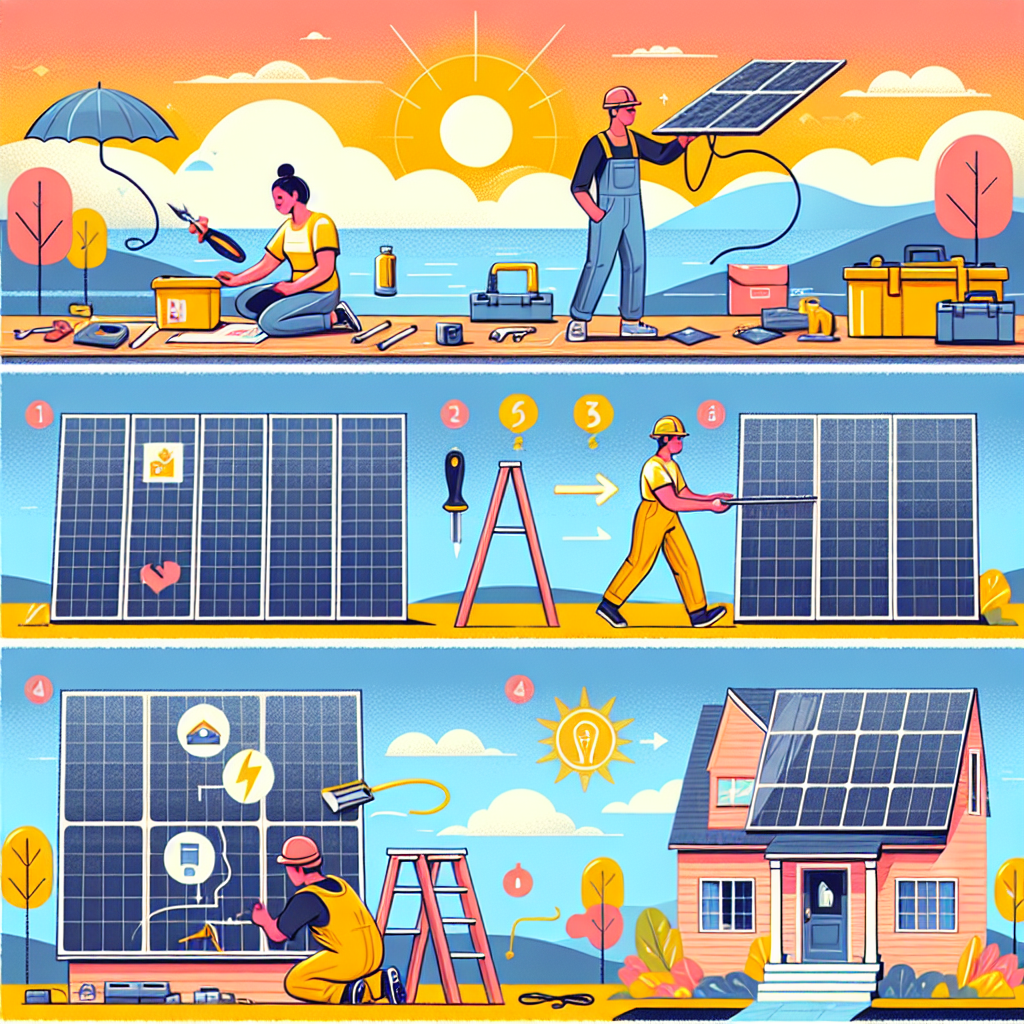Are you tired of high electricity bills and the environmental impact of traditional energy sources? If you’re leaning toward a sustainable lifestyle and want to reduce your carbon footprint, DIY solar panel installation might just be the answer. But before you start your solar project, there are several essential things to consider. In this guide, we’ll walk you through everything you need to know for a successful DIY solar panel installation, making the process smoother and more manageable.
Why Go Solar? Understanding the Benefits
Before diving into the installation process, it’s essential to grasp why solar energy is beneficial.
Environmental Impact
Solar energy significantly lowers greenhouse gas emissions. By harnessing the sun’s power, you contribute to a cleaner, healthier planet for future generations.
Cost Savings
One of the primary motivations for going solar is the potential cost savings. Solar panels can drastically reduce your monthly electricity bills and may even allow you to sell excess energy back to the grid, further offsetting costs.
Energy Independence
Installing solar panels gives you a degree of control over your energy consumption. You aren’t solely dependent on utility companies or fluctuating energy prices.
Assessing Your Home’s Solar Potential
Before you rush to purchase solar panels, you need to assess whether your home is suitable for solar energy production.
Roof Orientation and Angle
Ideally, your roof should face south (if you’re in the Northern Hemisphere) to capture maximum sunlight. Additionally, the angle of the roof plays a crucial role in energy generation; a pitch between 15 to 40 degrees is generally recommended.
Shade Analysis
Trees and buildings can cast shadows on your solar panels, significantly reducing their efficiency. Conduct a shade analysis throughout the day to evaluate potential obstructions.
Local Regulations and Incentives
Familiarizing yourself with local laws and regulations is crucial. Check if there are incentives, such as tax credits or rebates, in your area. These can significantly reduce the overall cost of installation.
Calculating Your Energy Needs
Before ordering solar panels, it’s vital to determine how much electricity your household consumes.
Review Your Electricity Bill
Analyze your electricity bill statements from the past year to understand your monthly energy usage and peak times.
Solar Calculator Tools
Many online tools can help you estimate the number of panels you’ll require based on your location and energy consumption. These calculators take into account factors like sunlight hours and efficiency ratings.
Choosing the Right Solar Equipment
Selecting the appropriate solar panels and equipment is crucial for maximizing energy generation and saving costs.
Types of Solar Panels
- Monocrystalline Panels: Highly efficient but tend to be pricier. They’re ideal for limited roof space.
- Polycrystalline Panels: Slightly less efficient but more affordable. Suitable if you have more space to work with.
- Thin-Film Panels: Easiest to install but less efficient. They’re often used when dealing with unique roof structures.
Inverter Options
The inverter converts the direct current (DC) generated by your panels into alternating current (AC) that your household can use. There are string inverters, microinverters, and power optimizers. Choose the one that aligns with your system’s design and efficiency needs.
Mounting Hardware
Ensure you have quality mounting hardware that can withstand local weather conditions. This prevents potential damage during storms and other natural phenomena.
Preparing for Installation
Preparation is key for a successful DIY solar panel installation. Be sure to follow these essential steps:
Gather Tools and Materials
Collect all tools you’ll need, ranging from basic hand tools to safety equipment. Having everything on hand will save time and reduce frustration during the installation.
Safety First
Safety should be your top priority. Use protective eyewear, gloves, and a hard hat to prevent injuries during installation. If you’re working on a roof, consider using a harness to prevent falls.
Installation Process: Step-by-Step
While the specifics can vary based on your system, here’s a general outline of the solar panel installation process:
1. Installing the Mounting System
Secure the mounting system first, ensuring it is level and fastened according to the manufacturer’s guidelines.
2. Installing the Solar Panels
Carefully place the solar panels onto the mounting hardware and secure them tightly. Be sure to follow the manufacturer’s instructions for proper alignment.
3. Connecting the Inverter
This part requires caution. Connect the inverter according to specific guidelines, ensuring all wires are properly routed and secured.
4. Making Electrical Connections
Join the inverter to your electrical panel. This connection typically requires a professional electrician unless you are well-versed in electrical systems.
5. Testing the System
Once everything is connected, it’s time to test your solar system. Check that the inverter is functioning correctly and that energy is being produced.
Maintenance: Keeping Your Solar Panels Efficient
After installation, you’ll want to ensure longevity and efficiency through regular maintenance.
Cleaning the Panels
Dust, debris, and bird droppings can decrease efficiency. Regularly clean the panels with gentle soap and water or hire a professional cleaning service.
Monitoring System Performance
Many modern solar systems come equipped with monitoring software. Use these tools to observe your system’s performance and ensure there are no drops in energy generation.
Conclusion: Is DIY Solar Panel Installation Right for You?
Opting for a DIY solar panel installation can be a rewarding way to embrace energy independence and contribute positively to the environment. However, it’s essential to arm yourself with knowledge and take necessary precautions.
Consider your unique situation, conduct thorough research, and follow the guidelines outlined in this article. With a bit of effort, you can tap into the power of the sun and keep your home running efficiently and sustainably.
Embrace the future—go solar!


